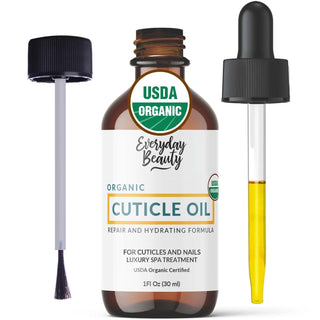The Green Revolution in Beauty
The beauty industry is experiencing a profound transformation as consumers increasingly demand products that are both effective and environmentally responsible. This shift toward sustainable skincare represents more than just a trend—it's a fundamental reimagining of how we approach personal care while considering our planet's future.
Modern consumers are becoming more conscious of their environmental footprint, seeking brands that align with their values and offer transparency in their practices. According to the Environmental Working Group, the average woman uses 12 personal care products daily, making the choice of sustainable beauty products more important than ever.

Sustainable skincare encompasses multiple dimensions, from ingredient sourcing and packaging choices to manufacturing processes and company ethics. The movement has gained momentum as scientific research continues to reveal the long-term environmental impacts of traditional beauty products, particularly their effects on marine ecosystems and biodiversity.
Research from Ocean Conservancy shows that personal care products contribute significantly to marine pollution, making the shift to eco-conscious skincare essential for ocean health. This awareness has sparked innovation across the industry, with brands developing new formulations and business models that prioritize both skin health and environmental protection.
Understanding Sustainable Ingredients
The foundation of any eco-conscious skincare routine begins with understanding the ingredients that go into our products. Sustainable skincare brands prioritize natural, organic, and ethically sourced components that minimize environmental impact while maximizing skin benefits. These ingredients are typically derived from renewable resources and cultivated using farming practices that protect soil health, conserve water, and support biodiversity.
Plant-based ingredients have emerged as particularly valuable in sustainable formulations. Botanical extracts, oils, and acids offer powerful skincare benefits while being biodegradable and renewable. Many of these ingredients are sourced through fair trade partnerships that support local communities and traditional farming methods.
The Rainforest Alliance certifies many sustainable ingredient suppliers, ensuring that natural skincare ingredients are harvested responsibly. For instance, ingredients like rosehip oil, sea buckthorn, and various plant extracts provide potent antioxidants and nutrients while being harvested in ways that don't deplete natural resources.
The contrast with synthetic ingredients is stark. While not all synthetic components are inherently harmful, many traditional skincare ingredients are derived from petroleum-based sources or require energy-intensive manufacturing processes. The Green Chemistry & Commerce Council advocates for safer alternatives that minimize environmental impact.
Sustainable brands are increasingly turning to bio-based alternatives that offer similar efficacy without the environmental cost, making clean beauty products more accessible to consumers. This includes naturally derived preservatives, plant-based emulsifiers, and mineral-based sunscreens.
Packaging Innovation and Waste Reduction
One of the most visible aspects of sustainable skincare is the revolution in packaging design and materials. Traditional beauty packaging has long been criticized for its excessive use of non-recyclable plastics, multiple layers of unnecessary wrapping, and single-use components.
The Ellen MacArthur Foundation has been instrumental in promoting circular economy principles in packaging design. Progressive brands are now pioneering alternatives that significantly reduce waste while maintaining product integrity and aesthetic appeal, leading consumers to seek out zero-waste skincare options.

Refillable packaging systems represent one of the most impactful innovations in this space. These systems allow consumers to purchase initial containers and then refill them with product inserts, dramatically reducing packaging waste over time. Some brands have developed magnetic closure systems, modular designs, and even subscription services that support this refill model. The approach not only reduces environmental impact but often provides cost savings to consumers over time.
Biodegradable and compostable packaging materials are also gaining traction. These include containers made from bamboo, recycled paper, mushroom-based materials, and even seaweed-derived films. Some innovative companies are experimenting with edible packaging for certain products, though this remains largely in the experimental phase. The key is finding materials that protect product integrity while breaking down naturally at the end of their lifecycle.
Manufacturing Processes and Carbon Footprint
Sustainable skincare extends beyond ingredients and packaging to encompass the entire manufacturing process. Eco-conscious brands are implementing practices that minimize energy consumption, reduce water usage, and eliminate harmful emissions. This includes investing in renewable energy sources for manufacturing facilities, implementing closed-loop water systems, and optimizing production processes to reduce waste.
Carbon footprint reduction has become a central focus for many sustainable skincare companies. This involves not only direct emissions from manufacturing but also indirect emissions from supply chain activities, transportation, and even the ingredients themselves. The Carbon Trust provides certification for companies that successfully reduce their carbon footprint. Some brands are achieving carbon neutrality through a combination of reduction strategies and offset programs, while others are working toward net-positive environmental impact. Consumers are increasingly drawn to carbon-neutral skincare options that align with their environmental values.

The concept of circular economy principles is being integrated into skincare manufacturing, where waste from one process becomes input for another. This might involve using byproducts from ingredient extraction for other purposes, recycling water within facilities, or even partnering with other industries to create closed-loop systems. These approaches significantly reduce the overall environmental impact of skincare production.
The Role of Certification and Transparency
Third-party certifications play a crucial role in helping consumers identify truly sustainable skincare products. Organizations like COSMOS, Leaping Bunny, and various organic certification bodies provide standardized criteria for evaluating environmental and ethical practices. The USDA Organic certification also ensures that ingredients meet strict organic standards. These certifications require brands to meet specific standards for ingredient sourcing, manufacturing processes, and business practices, helping consumers find certified organic skincare products they can trust.
Transparency has become equally important as certification. Sustainable skincare brands are increasingly providing detailed information about their supply chains, ingredient sourcing, and environmental impact. This includes publishing sustainability reports, sharing supplier information, and being open about challenges and improvement efforts. Consumers can now make informed decisions based on comprehensive information about a brand's environmental practices.
The rise of digital platforms has made this transparency more accessible than ever. Brands are using websites, social media, and mobile apps to share real-time information about their sustainability efforts, allowing consumers to track progress and hold companies accountable for their commitments.
Consumer Education and Sustainable Habits
Educating consumers about sustainable skincare practices extends beyond product selection to include usage habits and disposal methods. Many environmental benefits of sustainable skincare can be enhanced through proper use and disposal practices. This includes understanding how to recycle specific packaging materials, using products efficiently to minimize waste, and incorporating sustainable routines into daily life.
The concept of "less is more" is gaining traction in sustainable skincare, with many experts advocating for simplified routines that focus on multi-functional products and essential steps. Dermatologists and sustainability experts from institutions like the American Academy of Dermatology support this approach for both skin health and environmental benefits. This approach not only reduces environmental impact but often proves more beneficial for skin health by avoiding over-treatment and product interactions. Finding minimalist skincare routines that work effectively can significantly reduce both environmental impact and skincare costs.
Proper disposal of skincare products and packaging is another crucial aspect of consumer education. Many municipalities now offer specialized recycling programs for beauty products, and some brands provide take-back programs for their packaging. Understanding these options helps consumers complete the sustainability cycle and ensure their choices have maximum environmental benefit.
The Future of Sustainable Skincare
Looking ahead, the sustainable skincare industry continues to evolve with emerging technologies and changing consumer expectations. Innovations in biotechnology are creating new possibilities for sustainable ingredient production, including lab-grown botanicals and fermentation-derived compounds. These technologies could potentially reduce the environmental impact of skincare production while maintaining or improving product efficacy.

Artificial intelligence and data analytics are also playing increasing roles in optimizing sustainable practices. From supply chain optimization to personalized skincare recommendations that reduce product waste, technology is enabling more efficient and sustainable approaches to beauty care.
The integration of sustainability into skincare represents a fundamental shift in how we think about beauty and personal care. As consumers become more environmentally conscious and technology continues to advance, the boundaries between effective skincare and environmental responsibility continue to blur.
Take Action for Sustainable Beauty
The journey toward sustainable skincare is a personal one that reflects our values and commitment to environmental stewardship. By choosing brands that prioritize sustainability, we can collectively drive positive change in the beauty industry while caring for our skin and the planet.
Ready to make the switch to sustainable skincare? Explore the carefully curated selection of eco-friendly skincare products at Everyday Beauty, where every product is chosen for its commitment to both effectiveness and environmental responsibility. Start your sustainable skincare journey today and discover how beautiful skin and a healthy planet can go hand in hand.

